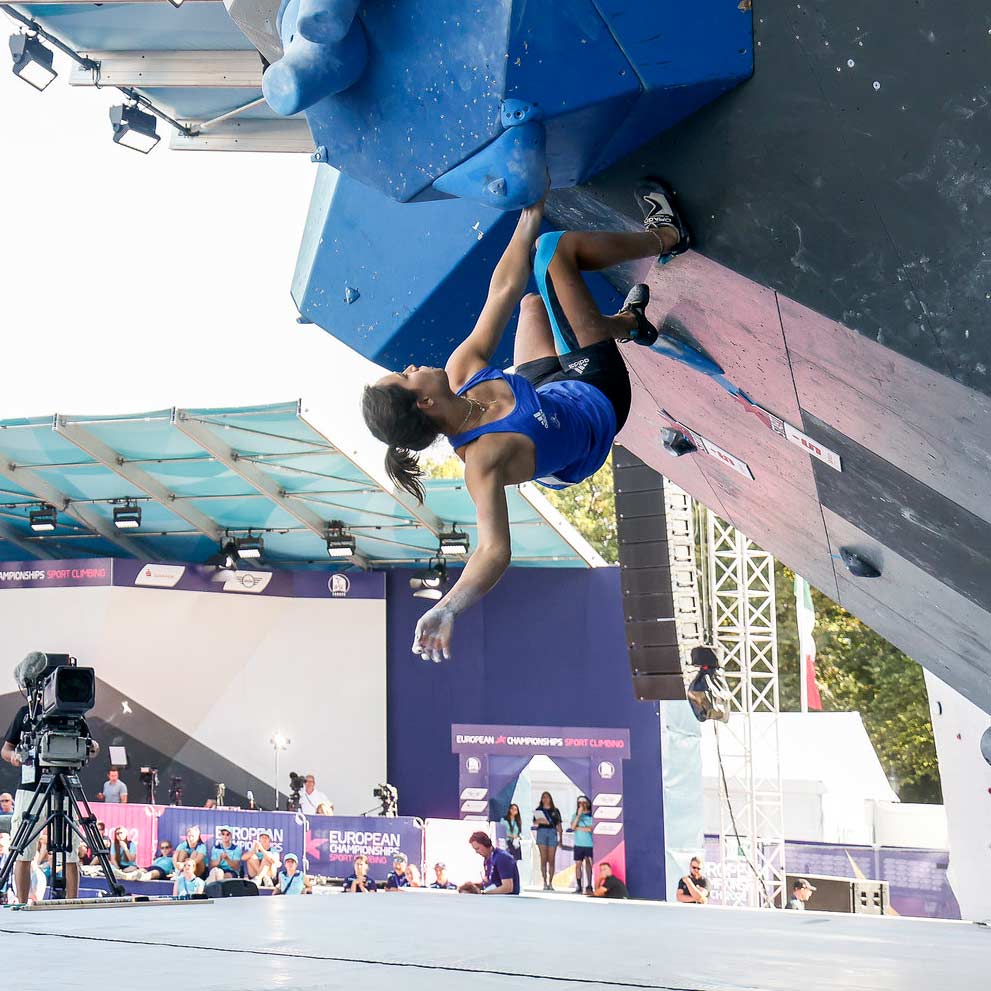Every climber knows that you should use resting points to shake your arms. But like do you shake correctly? We show you seven points that you should consider when shaking.
Climbing above a certain maximum capacity threshold for a longer distance impairs blood flow in the forearms. At around 50% of the maximum capacity, the blood flow is completely stopped. In this situation, neither oxygen is transported to the forearms, nor are lactate and other metabolic products removed.

Anyone who climbs in this state for too long will get pumped forearms. Fortunately, there are resting points on many climbing routes where you can shake your forearms and thus enable and stimulate circulation again. When it comes to shaking, however, it depends on the right technique. A point that is often forgotten: When shaking, don't just hold your arm down, but also up!
How do I shake properly when climbing?
- When you arrive at the resting point, try to consciously slow your breathing and relax.
- The arm holding on should be straight if possible.
- Switch the arm you are shaking in short intervals of 5-10 seconds. Otherwise, the arm that is not being shaken will close again.
- Take turns holding the arm you're shaking up when shaking. Gravity supports the removal of metabolic products.
- When shaking, try to hold yourself with your pinky, ring finger and minimally with your middle finger. This relieves the index and middle finger.
- When you change arms, it's often worth changing your pedaling position as well so that your center of gravity is as close to the rock as possible.
- Before you continue climbing, increase your breathing rate again. Also useful - although not for everyone: yell and yell before you start climbing to get into «fight mode».
Good luck with the climb!
That might interest you
- how strong are you really Test yourself
- This is how your fingers become really strong
- Compensation training is good – if it's done right | tips
Do you like our climbing magazine? When we launched LACRUX, we decided not to introduce a payment barrier. It will stay that way, because we want to provide as many like-minded people with news from the climbing scene.
In order to be more independent of advertising revenue in the future and to provide you with even more and better content, we need your support.
Therefore: Help and support our magazine with a small contribution. Naturally you benefit multiple times. How? You will find out here.
+ + +
Credits: Cover picture Jan Virt / IFSC


Thank you,
Nice collection.
In point 7, however, in my opinion, environmental protection collides with sport and the idea of performance.
Noise is also a way of harming the environment, other people and animals.
It may be OK in the climbing gym, but on the rock it is sometimes disconcerting and often disturbing when "young Ondras" scream or roar loudly with every move.
Of course, part of heavy climbing is refocusing after a point of rest. And I also find that making a sound can help. But I would rather choose a term like "noisy exhalation or growl at the wall"...
To continue the topic of screaming at the rock:
Of course, emotions are part of sport, including climbing. Of course it happens that someone screams out of anger at a fall or because of the joy of climbing through. Sometimes, however, it seems very ritualized with people or very much copied from the idols that one can definitely think twice about whether everyone had to scream.
Hard draws sometimes automatically create a loud noise or it helps to exhale loudly. But most of us climb routes where not every move is at the limit...
Noises and a certain volume are part of gatherings of people; Encouragement to exercise. However, I am of the opinion, also in terms of the acceptance of climbing in nature by nature conservationists, hikers, other climbers and authorities, that we climbers should try to avoid unnecessary noise. We are just as challenged to take other interests into account here as when parking on the rock or staying overnight with our campers...
Perhaps these thoughts don't belong as a comment under an article on how best to shake your arms on routes, but the article conjured up images in my mind of even more people "yelling and yelling" on the crag...
I enjoy reading your site, keep up the good work, best regards